The name ‘Chingford’ is said to derive from the Old English word ‘ching’, meaning ‘king’, and the ford over the River Lea, thought to be associated with Alfred the Great, hence the name of this pub.
Prints and text about Lords of the Manor.
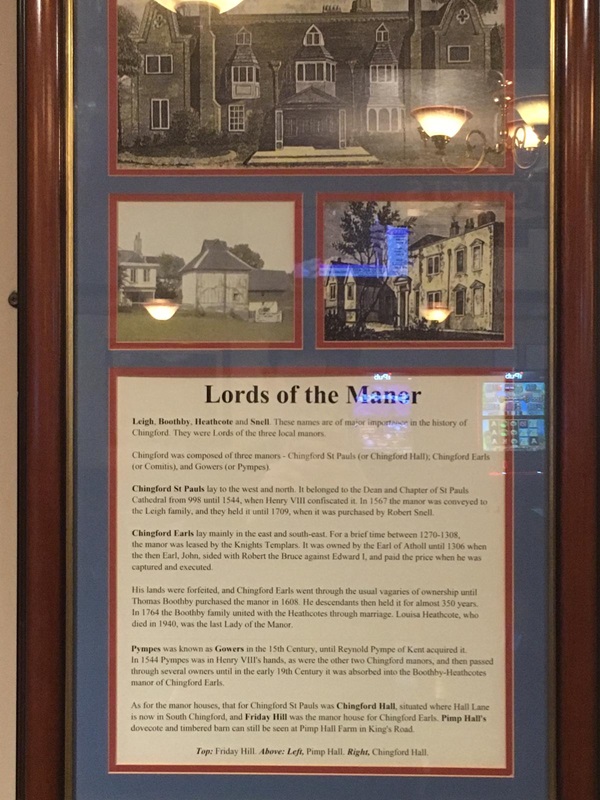
The text reads: Leigh, Boothby, Heathcote and Snell. These names are of major importance in the history of Chingford. They were Lords of the three local manors.
Chingford was composed of three manors – Chingford St Pauls (or Chingford Hall); Chingford Earls (or Comitis), and Gowers (or Pympes).
Chingford St Pauls lay to the west and north. It belonged to the Dean and Chapter of St Pauls Cathedral from 998 until 1544, when Henry VIII confiscated it. In 1567 the manor was conveyed to the Leigh family, and they held it until 1709, when it was purchased by Robert Snell.
Chingford Earls lay mainly in the east and south-east. For a brief time between 1270-1308, the manor was leased by the Knights Templars. It was owned by the Earl of Atholl until 1306 when the then Earl, John sided with Robert the Bruce against Edward I, and paid the price when he was captured and executed.
His lands were fortified, and Chingford Earls went through the usual vagaries of ownership until Thomas Boothby purchased the manor in 1608. He descendants then held it for almost 350 years. In 1764 the Boothby family united with the Heathcotes through marriage. Louisa Heathcote, who died in 1940, was the last Lady of the Manor.
Pympes was known as Gowers in the 15th century, until Reynold Pympe of Kent acquired it. 1544 Pympes was in Henry VIII’s hands, as were the other two Chingford manors, and then passed through several owners until the early 19th Century it was absorbed into the Boothby-Heathcotes manor of Chingford Earls.
As for the manor houses, that for Chingford St Pauls was Chingford Hall, situated where Hall Lane is now in South Chingford, and Friday Hill was the manor house for Chingford Earls. Pimp Hall’s dovecote and timbered barn can still be seen at Pimp Hall Farm in King’s Road.
Top: Friday Hill
Above: Left, Pimp Hall, right, Chingford Hall.
Prints and text about Queen Victoria’s visit to Chingford.
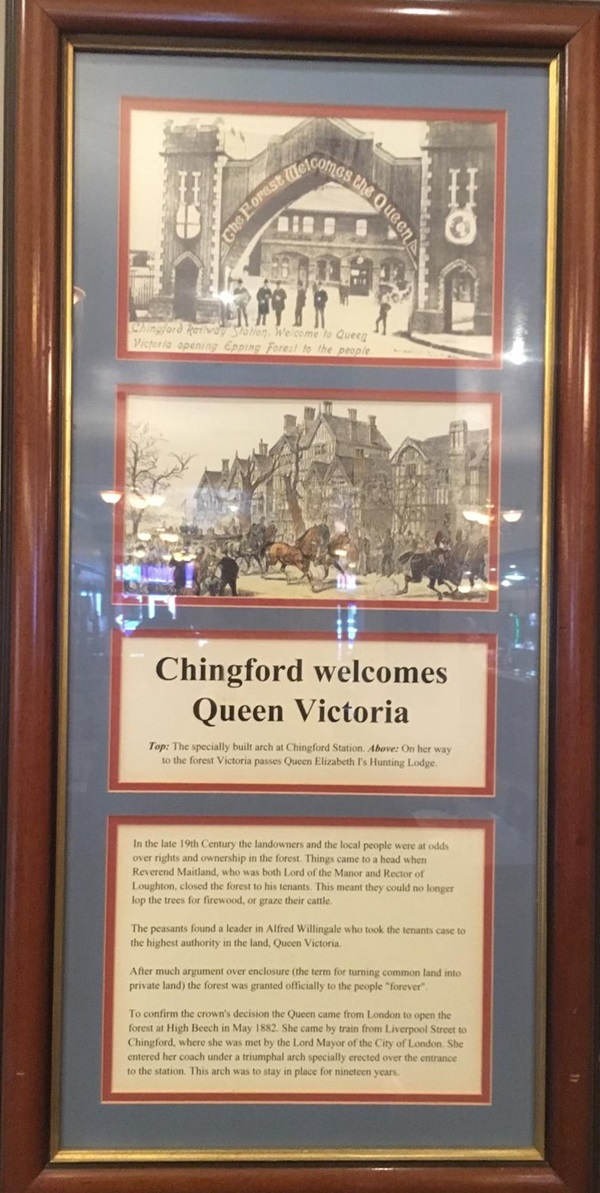
The text reads: In the late 19th century the landowners and the local people were at odds over the rights and ownership in the forest. Things came to a head when Reverend Maitland, who was both Lord of the Manor and Rector of Loughton, closed the forest to his tenants. This meant they could no longer lop the trees for firewood, or graze their cattle.
The peasants found a leader in Alfred Willingale who took the tenants case to the highest authority in the land, Queen Victoria.
After much argument over enclosure (the term for turning common land into private land) the forest was granted officially to the people “forever”.
To confirm the crown’s decision the Queen came from London to open the forest at High Beech in May 1882. She came by train from Liverpool Street to Chingford, where she was met by the Lord Mayor of the City of London. She entered her coach under a triumphal arch specially erected over the entrance to the station. This arch was to stay in place for nineteen years.
Top: The specially built arch at Chingford Station
Above: On her way to the forest Victoria passes Queen Elizabeth I’s Hunting Lodge.
The text reads: William Morris was born in Walthamstow on 24 March 1834. When he died in October 1896 his doctor, asked to give the cause of death, said “being William Morris and having done more work than most ten men”.
Morris became a leading and influential figure as a designer, writer, painter, publisher, and socialist. He lived in this area throughout his childhood when it was still rural. He was born at Elm House, and moved with his family to Woodford Hall, Water House and Leyton House. He was educated locally, before going to university. He often returned to visit his mother at Leyton House, and he was involved in the campaign that saved Epping Forest and preserved it as a public amenity.
Above: Left, Morris when a student at Oxford, right, The Morris and Burne-Jones families.
Prints and text about William Morris.
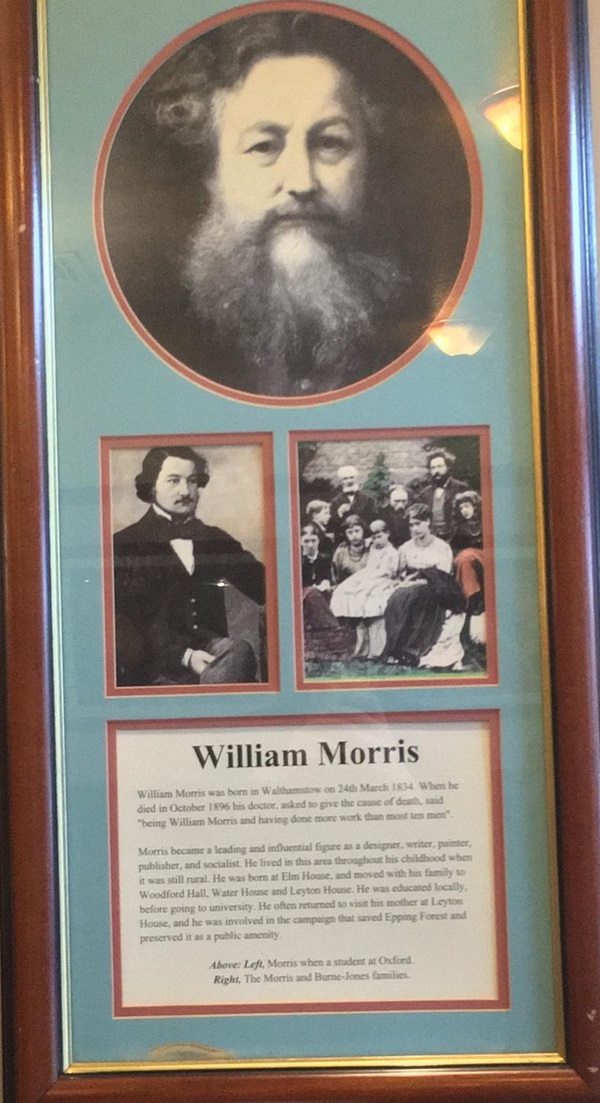
The text reads: William Morris was born in Walthamstow on 24 March 1834. When he died in October 1896 his doctor, asked to give the cause of death, said “being William Morris and having done more work than most ten men”.
Morris became a leading and influential figure as a designer, writer, painter, publisher, and socialist. He lived in this area throughout his childhood when it was still rural. He was born at Elm House, and moved with his family to Woodford Hall, Water House and Leyton House. He was educated locally, before going to university. He often returned to visit his mother at Leyton House, and he was involved in the campaign that saved Epping Forest and preserved it as a public amenity.
Above: Left, Morris when a student at Oxford, right, The Morris and Burne-Jones families.
Illustrations and text about the King’s ford.
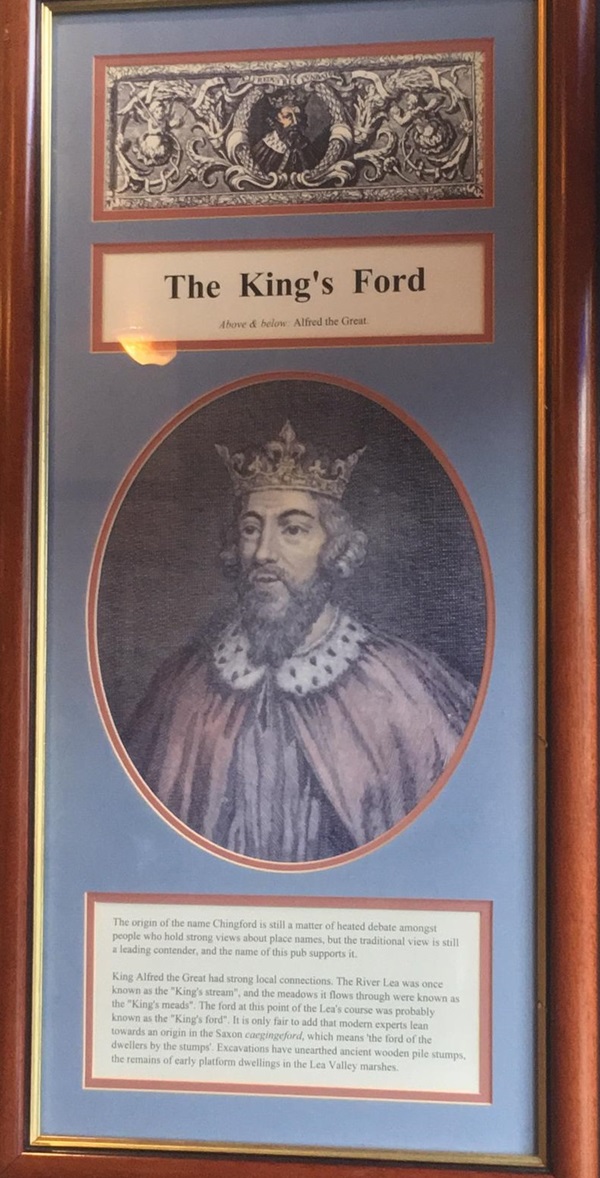
The text reads: The origin of the name Chingford is still a matter of heated debate amongst people who hold strong views about place names, but the traditional view is still a leading contender, and the name of this pub supports it.
King Alfred the Great had strong local connections. The River Lea was once known as the “King’s stream”, and the meadows it flows through were known as the “King’s meads”. The ford at this point of the Lea’s course was probably known as the “King’s ford”. It is only fair to add that modern experts lean towards an origin in the Saxon caegingeford, which means ‘the ford of the dwellers by the stumps’. Excavations have unearthed ancient wooden pile stumps, the remains of early platform dwellings in the Lea Valley marshes.
Above and below: Alfred the Great
A photograph of Station Road, Chingford, c1910.
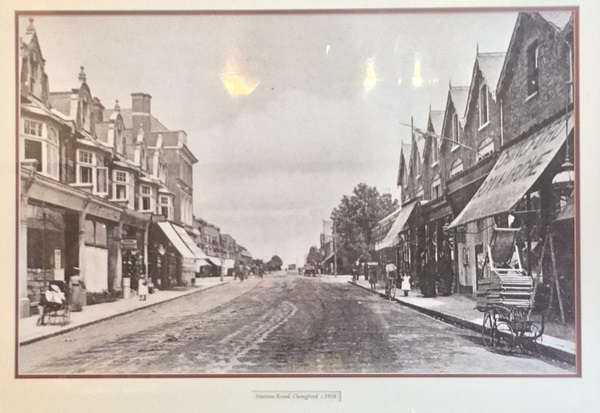
A photograph of the police station, Chingford, c1906.
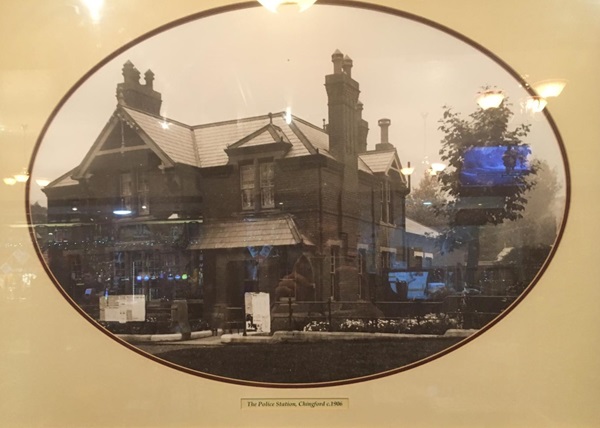
A photograph of the tram terminus, Chingford, c1910.
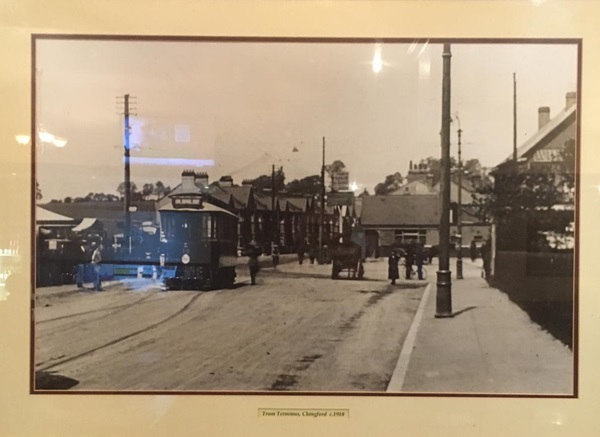
External photograph of the building – main entrance.
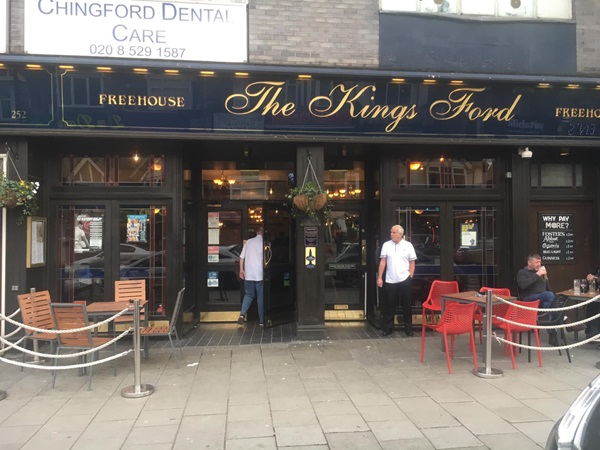
If you have information on the history of this pub, then we’d like you to share it with us. Please e-mail all information to: pubhistories@jdwetherspoon.co.uk